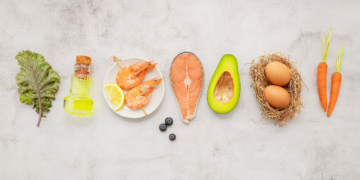Intermittent fasting (IF) has gained significant attention in the health and wellness community for its potential to improve weight management, boost metabolism, and enhance overall health. But what exactly is intermittent fasting, and how do you know if it’s the right approach for you? This guide explains the basics of intermittent fasting, its benefits, and tips for getting started.
What Is Intermittent Fasting?
Intermittent fasting is an eating pattern that alternates between periods of eating and fasting. Unlike traditional diets, IF doesn’t focus on what you eat but rather when you eat. By restricting your eating window, you give your body time to repair, reset, and optimize metabolic functions.
Popular Intermittent Fasting Methods
- 16/8 Method: Fast for 16 hours and eat during an 8-hour window. For example, eat between 12 PM and 8 PM.
- 5:2 Diet: Eat normally for 5 days and consume only 500–600 calories on 2 non-consecutive days.
- Eat-Stop-Eat: Fast for a full 24 hours once or twice a week.
- Alternate-Day Fasting: Alternate between regular eating days and fasting days.
- Warrior Diet: Fast for 20 hours and eat one large meal within a 4-hour window.
How Does Intermittent Fasting Work?
Intermittent fasting works by shifting your body into a metabolic state called ketosis, where it burns stored fat for energy instead of relying on glucose from food. Here’s how it impacts your body:
- During Fasting:
- Insulin levels drop, allowing fat stores to be accessed for energy.
- Growth hormone levels increase, aiding in fat loss and muscle repair.
- Cellular repair processes, such as autophagy, are activated to remove damaged cells.
- During Eating:
- Your body replenishes glycogen stores and uses nutrients for energy and repair.
Benefits of Intermittent Fasting
1. Weight Loss and Fat Burning
By limiting your eating window, IF helps reduce calorie intake and boosts fat burning. Lower insulin levels during fasting make it easier for your body to access fat stores for energy.
2. Improved Metabolism
Fasting can increase metabolic rate by enhancing hormone function, leading to more efficient calorie burning.
3. Better Blood Sugar Control
Intermittent fasting helps regulate blood sugar and improves insulin sensitivity, reducing the risk of Type 2 diabetes.
4. Enhanced Brain Function
Fasting boosts brain-derived neurotrophic factor (BDNF), a protein that supports brain health, memory, and mood.
5. Heart Health
Studies suggest that intermittent fasting may lower blood pressure, cholesterol, and inflammation, reducing the risk of heart disease.
6. Longevity and Cellular Repair
Fasting triggers autophagy, a cellular process that removes damaged cells, potentially slowing the aging process and reducing the risk of chronic diseases.
Explore the science behind fasting: National Institutes of Health (NIH)
Is Intermittent Fasting Right for You?
Who Can Benefit:
- Weight Management Seekers: Those looking to lose or maintain weight.
- Busy Individuals: People who prefer fewer meals or don’t want to count calories.
- Health-Conscious Individuals: Those interested in improving metabolic health or reducing inflammation.
Who Should Avoid It:
- Pregnant or breastfeeding individuals.
- People with a history of eating disorders.
- Those with certain medical conditions, such as diabetes, without medical supervision.
Pro Tip: Always consult a healthcare professional before starting a new fasting regimen.
Tips for Starting Intermittent Fasting
- Choose the Right Method: Start with a manageable fasting schedule, like the 16/8 method.
- Stay Hydrated: Drink plenty of water, herbal teas, or black coffee during fasting periods.
- Focus on Nutrient-Dense Foods: During your eating window, prioritize whole, unprocessed foods like lean proteins, healthy fats, and fiber-rich vegetables.
- Listen to Your Body: If you feel excessively tired, dizzy, or unwell, adjust your fasting routine.
- Ease Into It: Gradually increase fasting hours to allow your body to adapt.
Common Misconceptions About Intermittent Fasting
Myth 1: Fasting Causes Muscle Loss
Fasting doesn’t inherently lead to muscle loss. As long as you consume enough protein and engage in resistance training, muscle mass can be preserved.
Myth 2: Fasting Is the Same as Starvation
Fasting is a controlled approach with specific eating and fasting windows, while starvation is prolonged food deprivation without intent or control.
Myth 3: You Can Eat Anything During Eating Windows
While intermittent fasting doesn’t restrict specific foods, choosing nutrient-dense meals maximizes its health benefits.
Frequently Asked Questions
Can I Exercise While Fasting?
Yes! Light to moderate exercise, such as walking or yoga, is generally well-tolerated during fasting. For high-intensity workouts, plan them during your eating window.
What Can I Drink During Fasting?
You can drink water, black coffee, herbal teas, or other non-caloric beverages to stay hydrated.
How Long Does It Take to See Results?
Results vary, but many people notice improved energy and reduced cravings within the first two weeks. Weight loss and metabolic improvements may take 4–6 weeks.
Final Thoughts
Intermittent fasting is a versatile and science-backed approach to improving overall health. Whether your goal is weight loss, better metabolism, or enhanced longevity, fasting may offer significant benefits. However, it’s essential to tailor your fasting method to your lifestyle and needs, and consult with a healthcare provider if you have underlying health concerns.
Start with small, consistent changes, and let your body guide your fasting journey toward better health.





















